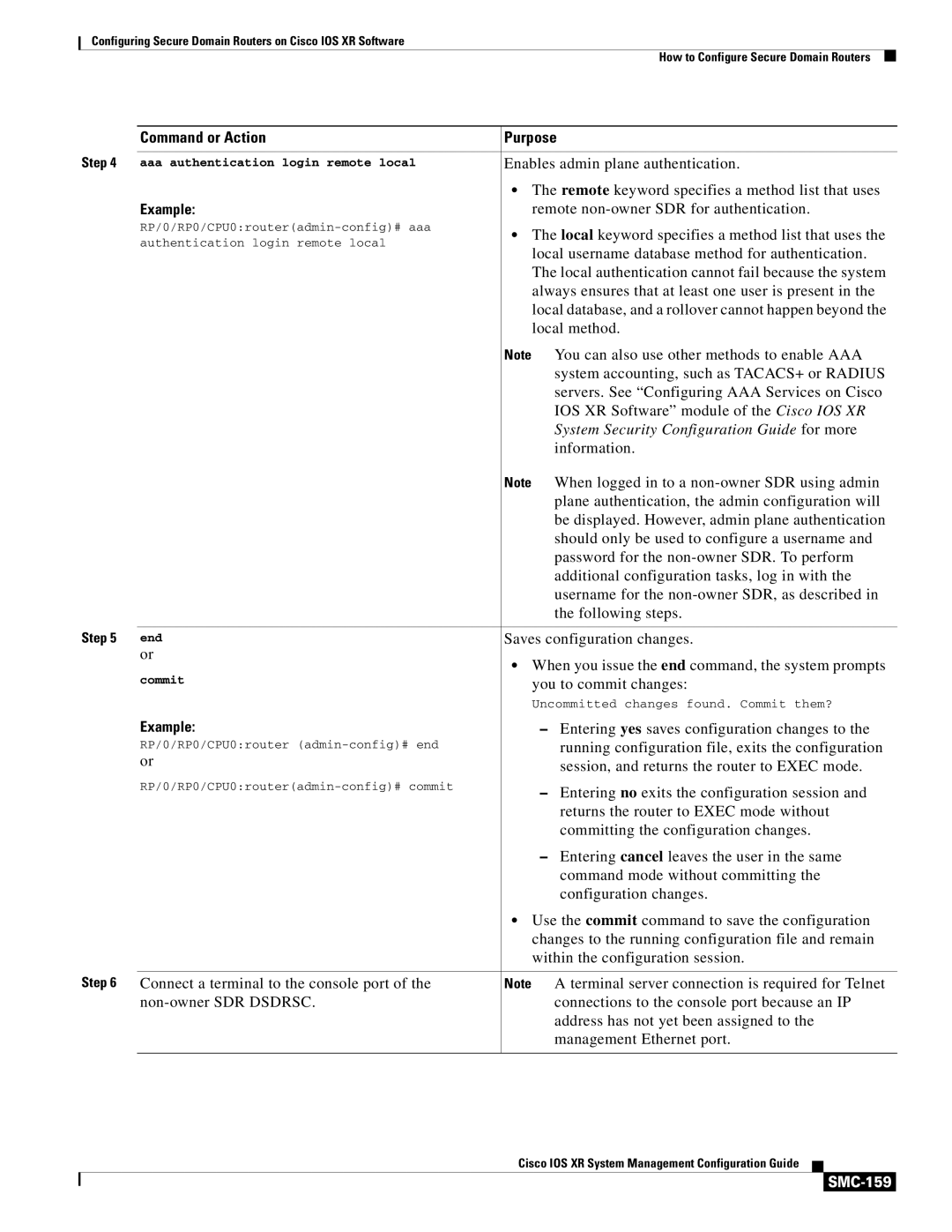
Configuring Secure Domain Routers on Cisco IOS XR Software
How to Configure Secure Domain Routers
| Command or Action | Purpose |
Step 4 |
|
|
aaa authentication login remote local | Enables admin plane authentication. | |
|
| • The remote keyword specifies a method list that uses |
| Example: | remote |
| • The local keyword specifies a method list that uses the | |
| authentication login remote local | |
| local username database method for authentication. | |
|
| |
|
| The local authentication cannot fail because the system |
|
| always ensures that at least one user is present in the |
|
| local database, and a rollover cannot happen beyond the |
|
| local method. |
|
| Note You can also use other methods to enable AAA |
|
| system accounting, such as TACACS+ or RADIUS |
|
| servers. See “Configuring AAA Services on Cisco |
|
| IOS XR Software” module of the Cisco IOS XR |
|
| System Security Configuration Guide for more |
|
| information. |
|
| Note When logged in to a |
|
| plane authentication, the admin configuration will |
|
| be displayed. However, admin plane authentication |
|
| should only be used to configure a username and |
|
| password for the |
|
| additional configuration tasks, log in with the |
|
| username for the |
|
| the following steps. |
Step 5 |
|
|
end | Saves configuration changes. | |
| or | • When you issue the end command, the system prompts |
|
| |
| commit | you to commit changes: |
|
| Uncommitted changes found. Commit them? |
| Example: | – Entering yes saves configuration changes to the |
| RP/0/RP0/CPU0:router | running configuration file, exits the configuration |
| or | session, and returns the router to EXEC mode. |
|
| |
| – Entering no exits the configuration session and | |
|
| |
|
| returns the router to EXEC mode without |
|
| committing the configuration changes. |
|
| – Entering cancel leaves the user in the same |
|
| command mode without committing the |
|
| configuration changes. |
|
| • Use the commit command to save the configuration |
|
| changes to the running configuration file and remain |
|
| within the configuration session. |
|
|
|
Step 6 Connect a terminal to the console port of the | Note A terminal server connection is required for Telnet | |
| connections to the console port because an IP | |
|
| address has not yet been assigned to the |
|
| management Ethernet port. |
|
|
|
Cisco IOS XR System Management Configuration Guide
